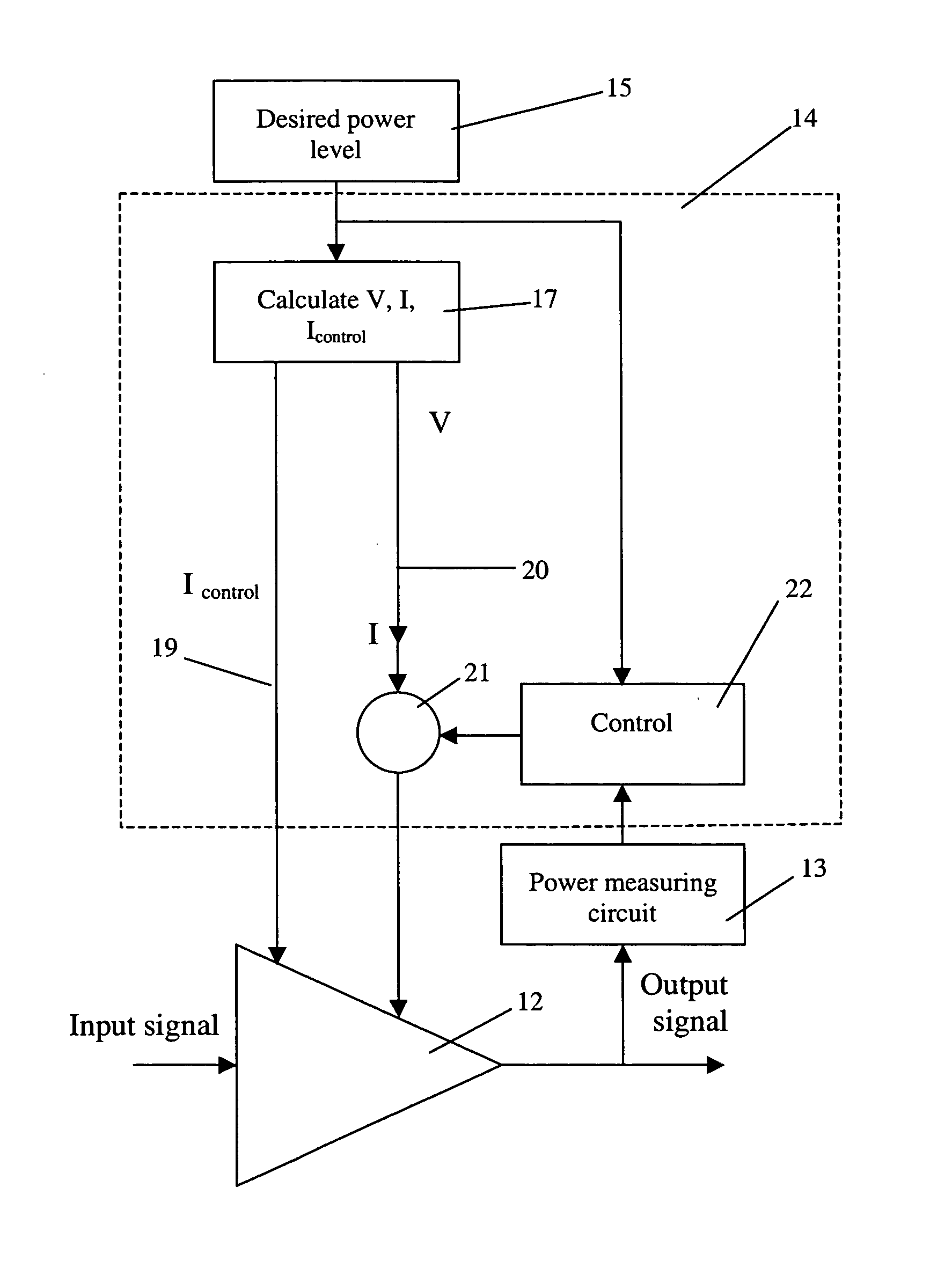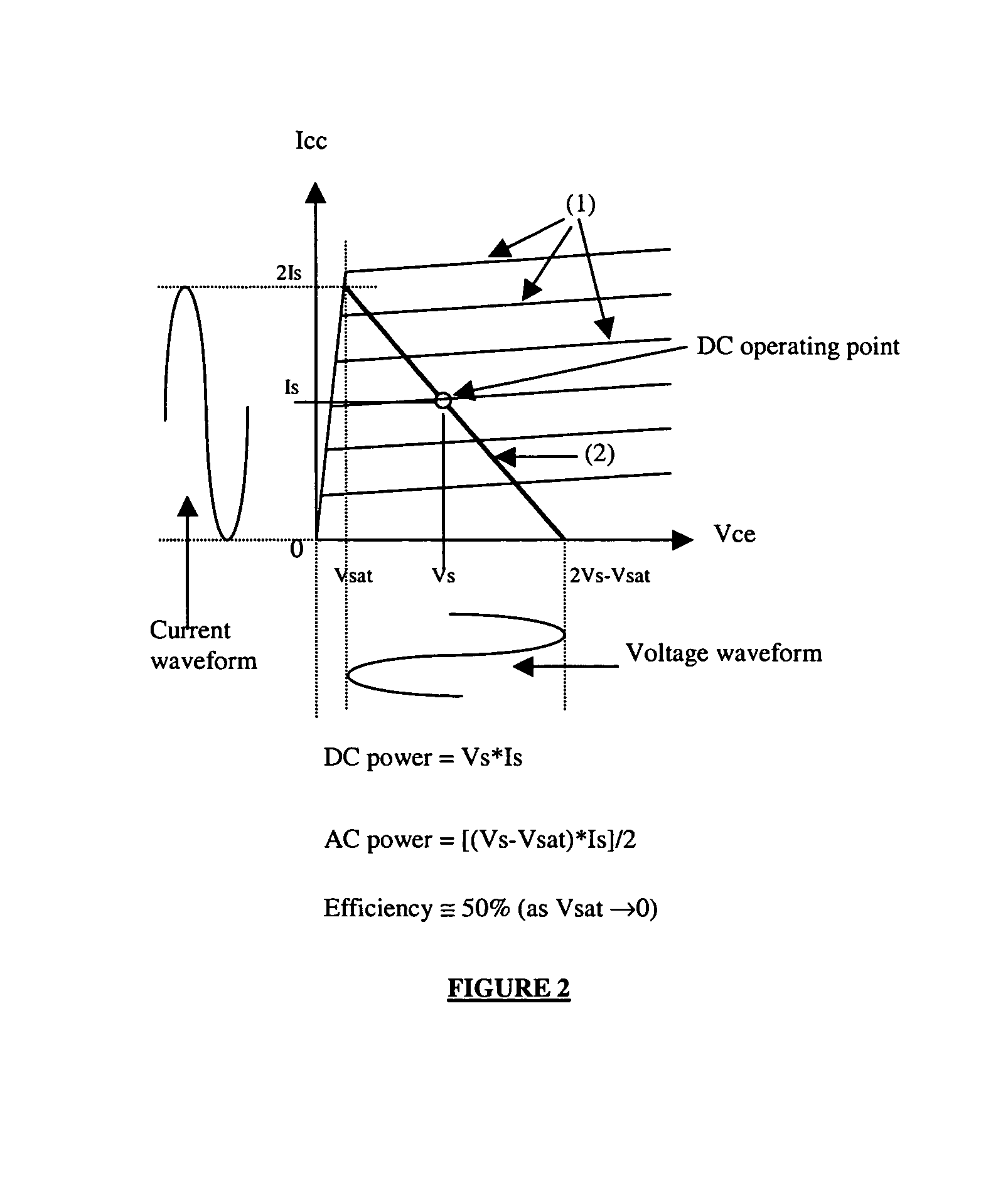Amplifier circuit
- Summary
- Abstract
- Description
- Claims
- Application Information
AI Technical Summary
Benefits of technology
Problems solved by technology
Method used
Image
Examples
Embodiment Construction
[0032]Referring to FIG. 1 of the accompanying drawings, there is shown an amplifier 1 comprising a NPN bipolar transistor TR1. An inductor L1 is connected to a collector terminal 2 of the transistor TR1. Likewise, an inductor L2 is connected to a base terminal 3 of the transistor TR1. A load Zload is connected to the collector terminal 2 via a lossless matching circuit M1. The lossless matching circuit transforms the load Zload into a completely real impedance Ropt. Accordingly, the effective load presented to the transistor collector is Ropt. Preferably, the matching circuit M1 includes any transistor parasitics (collector-emitter capacitance and load inductance) so that Ropt is the impedance presented to the transistor die. Ropt is called the dynamic load impedance and has the value of a pure resistance, measured in units of Ohms.
[0033]Referring now to FIG. 2, there are shown the collector characteristic curves 1 of the transistor TR1 together with dynamic load line 2. The horizon...
PUM
 Login to View More
Login to View More Abstract
Description
Claims
Application Information
 Login to View More
Login to View More - R&D
- Intellectual Property
- Life Sciences
- Materials
- Tech Scout
- Unparalleled Data Quality
- Higher Quality Content
- 60% Fewer Hallucinations
Browse by: Latest US Patents, China's latest patents, Technical Efficacy Thesaurus, Application Domain, Technology Topic, Popular Technical Reports.
© 2025 PatSnap. All rights reserved.Legal|Privacy policy|Modern Slavery Act Transparency Statement|Sitemap|About US| Contact US: help@patsnap.com



